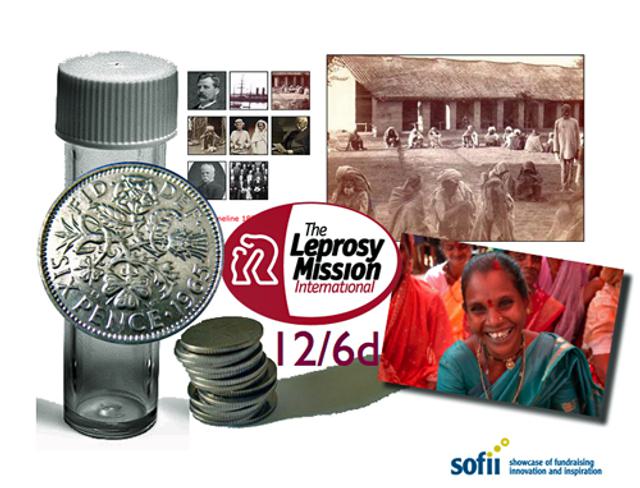The Leprosy Mission: phial of sixpences, from the 1960s
- Exhibited by
- Ken Burnett
- Added
- July 19, 2010
- Medium of Communication
- Target Audience
- Single gift.
- Type of Charity
- Healthcare.
- Country of Origin
- UK.
- Date of first appearance
- 1960
SOFII’s view
New product development and testing is a specialism that’s all too rarely mastered by fundraisers today. The product featured here captured the imagination of a 10-year-old boy who went on to work with some of the most successful fundraising organisations around the world. Yet its simplicity and effectiveness never left him. This is an incomplete exhibit, though still worth recording even with most of its information still to be filled in. Please do help with that, if you can.
Summary / objectives
Twelve shillings and sixpence (nowadays £0.65p but back then in pre-decimalisation days it was a reasonable sum of money, perhaps equivalent to £10.00 today) to enable the Leprosy Mission to provide a course of sulfone treatment to cure one leprosy patient in Asia, Africa, or the Pacific islands.
Background
I will record this here simply as I remember it. I was 10 years old or so at the time and living in my home town of Nairn in the Scottish Highlands. This wasn’t my introduction to fundraising (see Dr Barnardo's home collecting box, here) but it was close to it and it influenced me profoundly.
Active at my local church then was a spinster lady named Miss MacIntosh. She was universally known as the Lord’s sister, not just for her excessive piety but also because her brother really was Lord MacIntosh, a toff in the neighourhood. She raised funds for the local branch of the Leprosy Mission, an evangelical cause that, as its name suggests, existed to help those suffering from the dreadful scourge of leprosy. I remember her dinning into me the understanding that leprosy wasn't a biblical disease, that people in far off lands lived with it to this day and that it was our duty to help them. She told me that it was passed on by touching and that people with leprosy lost their fingers and toes, which frightened the impressionable young me more than a bit.
The Lord’s sister gave me a supply of the neat plastic tubes into which potential donors were encouraged to insert a sixpence each week. In 25 weeks they would have collected enough for a course of treatment that would liberate one individual from leprosy and so prevent its passing on to other family members too. I loved it. All I had to do was remember who I’d given the phial to, then go back six months later to collect the phial full of lovely sixpences. This I did for a while, for the Lord’s sister. It meant something to me. If I hadn’t discovered girls and pubs in the meantime I’d probably be doing it still.
Special characteristics
It’s a simple proposition and an easily usable collecting device with a clear, tangible objective and outcome. It worked for me.
Costs
No idea.
Results
Good, I think, but again, I didn't keep records.
Merits
It's delightful and effective.
Other relevant information
I really wish we could get hold of an illustration of the actual phial and some of the surrounding promotional materials.
 View original image
View original image

















